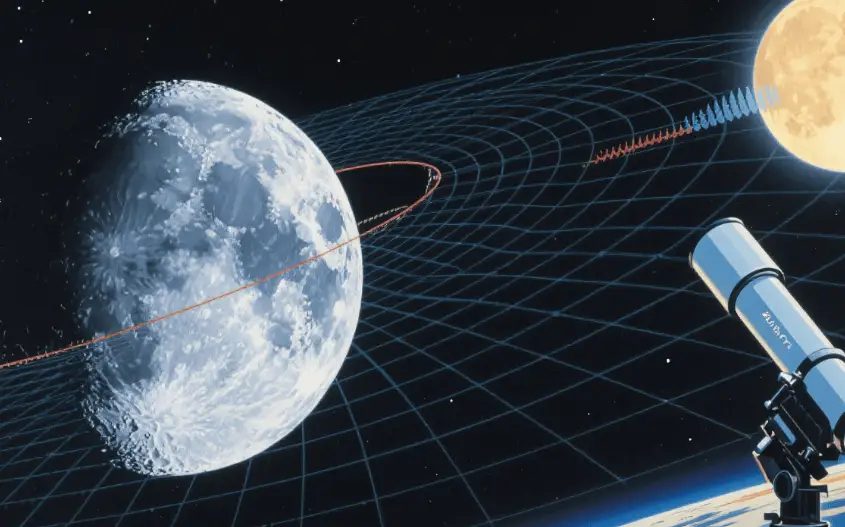An astonishing astronomical phenomenon is quietly occurring: the moon, Earth's faithful companion, is quietly receding from us at a rate of 3.8 centimeters per year. This number may sound insignificant at first, but its cumulative impact is significant. Imagine the moon moving 38 centimeters farther from us in just ten years; over centuries or millennia, this distance becomes incredibly significant.
The moon used to seem within reach, large and round, like a silver disk suspended in the sky. Now, the moon, which has accompanied us through countless wonderful moments, is silently drifting further away.
So, what is driving the moon's departure?
The driving force behind this is Earth's tidal forces. As the moon orbits Earth under the influence of Earth's gravity, it also exerts a gravitational pull on Earth, causing tides in our oceans and crust. Because the Earth's rotation speed is much faster than the Moon's orbital speed, Earth's tidal bulge always leads the Moon. This "drag" effect transfers some of Earth's energy to the Moon, giving it additional momentum and gradually moving away from Earth.

The Moon's orbit around Earth is elliptical, so the distance between the Moon and Earth is not constant. At its closest approach, it's about 350,000 kilometers; at its farthest, it can reach 400,000 kilometers. This variation in distance causes the Moon to appear larger at times and smaller at others, which is why it appears to be a "supermoon." While a 3.8-centimeter annual change may seem insignificant compared to a distance of hundreds of thousands of kilometers, its cumulative effect becomes apparent over time.
Scientists have devoted tremendous effort to accurately measuring the distance between the Earth and the Moon. As early as the 1960s and 1970s, they used laser ranging technology, firing a laser from Earth to the Moon and measuring the time it takes for the laser to reflect back from the Moon. This method allowed them to deduce an extremely precise Earth-Moon distance value. This innovative measurement method undoubtedly demonstrates the ingenuity and talent of scientists.
The moon's receding distance will not only affect our moon-viewing experience but may also have profound impacts on Earth's tides and ecosystems. While these changes may be imperceptible in the short term, their potential long-term impact cannot be ignored. Imagine a future Mid-Autumn Festival night where the moon becomes smaller and fainter, perhaps requiring a telescope to appreciate its beauty. This scene is a somewhat regrettable sight.
However, the universe is vast and full of wonders. The moon's receding distance may be just a minor episode in the vast history of the universe. But for us humans, this change has extraordinary significance. It reminds us that Earth does not exist in isolation but is interconnected and influenced by numerous celestial bodies. In this vast universe, every subtle change can trigger a chain reaction that affects our lives and our future.
What are your thoughts on this amazing phenomenon of the moon's sneaking away? Please share your insights in the comments section; perhaps we can spark new ideas.
